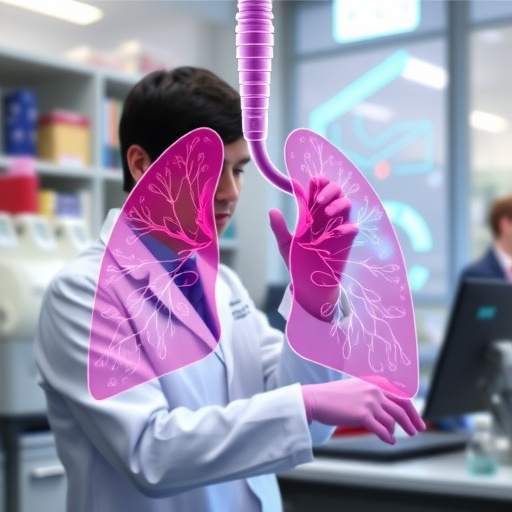November 7, 2018 – Over the past three decades, the Traumatic Brain Injury Model Systems Center (TBIMSC) program has served as a critical source of research to improve care and outcomes for patients and families affected by traumatic brain injury (TBI). The history and research achievements of the TBIMSC are reviewed in the November/December issue of the Journal of Head Trauma Rehabilitation (JHTR). The official journal of the Brain Injury Association of America, JHTR is published in the Lippincott portfolio by Wolters Kluwer.
"On the occasion of the 30th anniversary of the TBIMSC program, this article highlights many of the accomplishments of this well-established, multicenter TBI research consortium," write Marcel P. Dijkers, PhD, of Icahn School of Medicine at Mount Sinai, New York City, and colleagues. In a special article, the authors focus on the recent research activities of the TBIMSC program – including its long-term National Database and efforts to "translate" research advances into improvements in the care and rehabilitation of patients with TBI.
Thirty Years of Collaborative Research to Improve TBI Outcomes The Traumatic Brain Injury Model Systems Centers were established by the National Institute on Disability, Independent Living, and Rehabilitation Research (NIDILRR) in 1987, with the goal of improving healthcare – especially rehabilitation care – and outcomes for patients with moderate-to-severe TBI. The original objective of the TBIMSC program was to demonstrate the value of coordinated medical, social, and vocational services for this group of patients, a group that had previously been placed in psychiatric hospitals or other long-term care facilities.
Currently, there are 16 funded TBIMSCs across the United States. All of these institutions carry out research activities connected to clinical care for patients with TBI, including emergency, acute, neurosurgical, and inpatient and outpatient rehabilitation services. The TBIMSCs perform site-specific and collaborative research to build the evidence base for advancing care and outcomes for patients with TBI. For the past decade, the TBIMSC program has collaborated with the Department of Veterans Affairs Polytrauma Research Centers, focusing on TBI as the "signature injury" of the Middle-East wars.
A central component of the program's mission is the creation and maintenance of the TBI National Database. The database includes information on all eligible adult patients with moderate-to-severe TBI at each TBIMSC institution. Standardized data are collected at the time of initial injury, at one, two, and five years post-injury, and every five years thereafter. The first group of patients recently completed their 25th year of follow-up.
Since 1989, TBIMSC institutions have contributed about 16,500 patients to the TBI National Database, building a uniquely rich source of data to answer clinical questions and evaluate long-term outcomes after TBI. Ongoing efforts continue to assess and expand the quality and value of the data collected.
Over the years, the TBIMSCs have produced hundreds of research papers advancing the field of TBI care. The scope of research is broad, with outcomes including not only long-term health and functioning, but also social participation, employment, and quality of life. Research has also focused on new approaches for problems such as sleep and fatigue, emotional dysregulation, and memory and cognitive impairments.
Emerging initiatives include efforts to identify genetic or other factors to help in understanding why some patients with moderate-to-severe TBI have better outcomes than others. The TBIMSCs also collaborate with another NIDILRR initiative, the Model Systems Knowledge Translation Center, following a variety of strategies to ensure that research is "relevant and accessible" to people with disabilities and their families, as well as to researchers, clinicians, policy makers, and advocacy groups.
The TBIMSC program includes the largest research database for TBI in the world. Researchers continue to learn from the data collected in their efforts to advance the field. With a focus on relevance to stakeholders, the TBIMSCs' have and continue to improve outcomes for individuals with TBI.
###
Click here to read "Thirty Years of National Institute on Disability, Independent Living, and Rehabilitation Research Traumatic Brain Injury Model Systems Center Research–An Update"
DOI: 10.1097/HTR.0000000000000454
About The Journal of Head Trauma Rehabilitation
The Journal of Head Trauma Rehabilitation is a leading, peer-reviewed resource that provides up-to-date information on the clinical management and rehabilitation of persons with traumatic brain injuries. Six issues each year aspire to the vision of "knowledge informing care" and include a wide range of articles, topical issues, commentaries and special features. It is the official journal of the Brain Injury Association of America.
About the Brain Injury Association of America
The Brain Injury Association of America is the country's oldest and largest nationwide brain injury advocacy organization. Our mission is to advance awareness, research, treatment and education and to improve the quality of life for all individuals impacted by brain injury. Through advocacy, we bring help, hope and healing to millions of individuals living with brain injury, their families and the professionals who serve them.
About Wolters Kluwer
Wolters Kluwer is a global leader in professional information, software solutions, and services for the health, tax & accounting, finance, risk & compliance, and legal sectors. We help our customers make critical decisions every day by providing expert solutions that combine deep domain knowledge with specialized technology and services.
Wolters Kluwer, headquartered in the Netherlands, reported 2017 annual revenues of €4.4 billion. The company serves customers in over 180 countries, maintains operations in over 40 countries, and employs approximately 19,000 people worldwide.
Wolters Kluwer Health is a leading global provider of trusted clinical technology and evidence-based solutions that engage clinicians, patients, researchers and students with advanced clinical decision support, learning and research and clinical intelligence. For more information about our solutions, visit http://healthclarity.wolterskluwer.com and follow us on LinkedIn and Twitter @WKHealth.
Media Contact
Connie Hughs
[email protected]
646-674-6348
@WKHealth
http://www.lww.com



